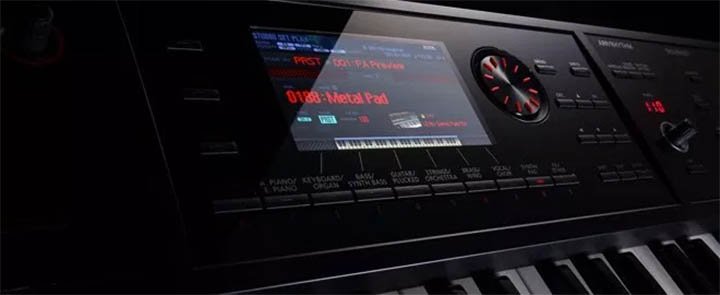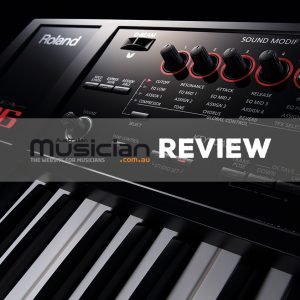Hit the Ground Running with the FA-06/FA-08
Contributed by Ed Diaz (Roland US Team)
If you’ve used some of Roland’s earlier workstations, you’re probably familiar with multiple Sound Modes. One of the first things you’ll notice when using the new FA series workstations is that there is only one – Studio Set. There is a benefit to only having one, but first let’s take a look at how some of our other workstations operate with multiple modes.
AXIAL: Download Additional Sounds for Your FA Workstation
FANTOM-X8 Workstation Keyboard
Fantom-X Music Workstation…
The FANTOM-X series workstations, released in 2004, have two Sound Modes, Patch and Performance. What’s the difference? Patch Mode allows you to play a single sound (a patch), and Performance Mode allows you to Layer, Split and sequence multiple sounds (16 MIDI parts). Pretty straight forward, right? Well, not exactly. For some, the issue exists in the way effects are routed under these different Modes. For example, if you want to layer, split or sequence a sound that you found in Patch Mode, you’d have to open it in Performance Mode. However, when opening the sound in Performance Mode, you’ll notice that the sound isn’t quite the same. This is because the effects that are present with the sound in Patch Mode are not present in Performance Mode. This means that you would have to add and tweak the patch in Performance Mode to make it identical to the sound in Patch Mode. Great for tweakers…not so great for people that just want to jam.
FANTOM-G8 Workstation Keyboard
Fantom-G Music Workstation…
The FANTOM-G series workstations, released in 2008, have three Sound Modes: Single, Live Set, and Studio Set. The relation from FANTOM-X to FANTOM-G are as follows: Patch Mode became Single, Performance Mode became Studio Set, and Live Set is a new mode that includes eight internal sounds (eight MIDI parts). The FANTOM-G features an updated effects routing section, and it is possible to edit sounds in some modes but edits made to a sound are not available in all modes. For example, when sequencing on the FANTOM-G, using Studio Set is ideal in order to take full advantage of all 16 MIDI parts. But some of us, myself included, would on occasion start a recording in Live Set, which only allows eight parts to sequence. I’d get half way through the song before realizing Studio Set was not selected. Whenever this happened, I’d stop and yell at myself for not paying attention, and then recreate everything I’d already made in Live Set Mode, which put a kink into my creative process.

FA-06/08 Music Workstation…
Enter the FA series workstations: there’s only one Sound Mode, Studio Set. This allows you to play single tones, as in Patch Mode in the FANTOM-X, or Single as in the FANTOM-G. It also allows you to create Layers, Splits and MIDI sequences with multiple tones (16 parts) with all effects intact. With the FA series workstations, you’re always in the correct Sound Mode, the same architecture found in the INTEGRA-7 Sound Module. In the following video, learn how simple and intuitive it is to work with Studio Sets. Please drop a comment if you have any questions and enjoy!
Studio Set Set-Up for Live play
Related Article
Gig Ready Synths – Which One is Right for You?










